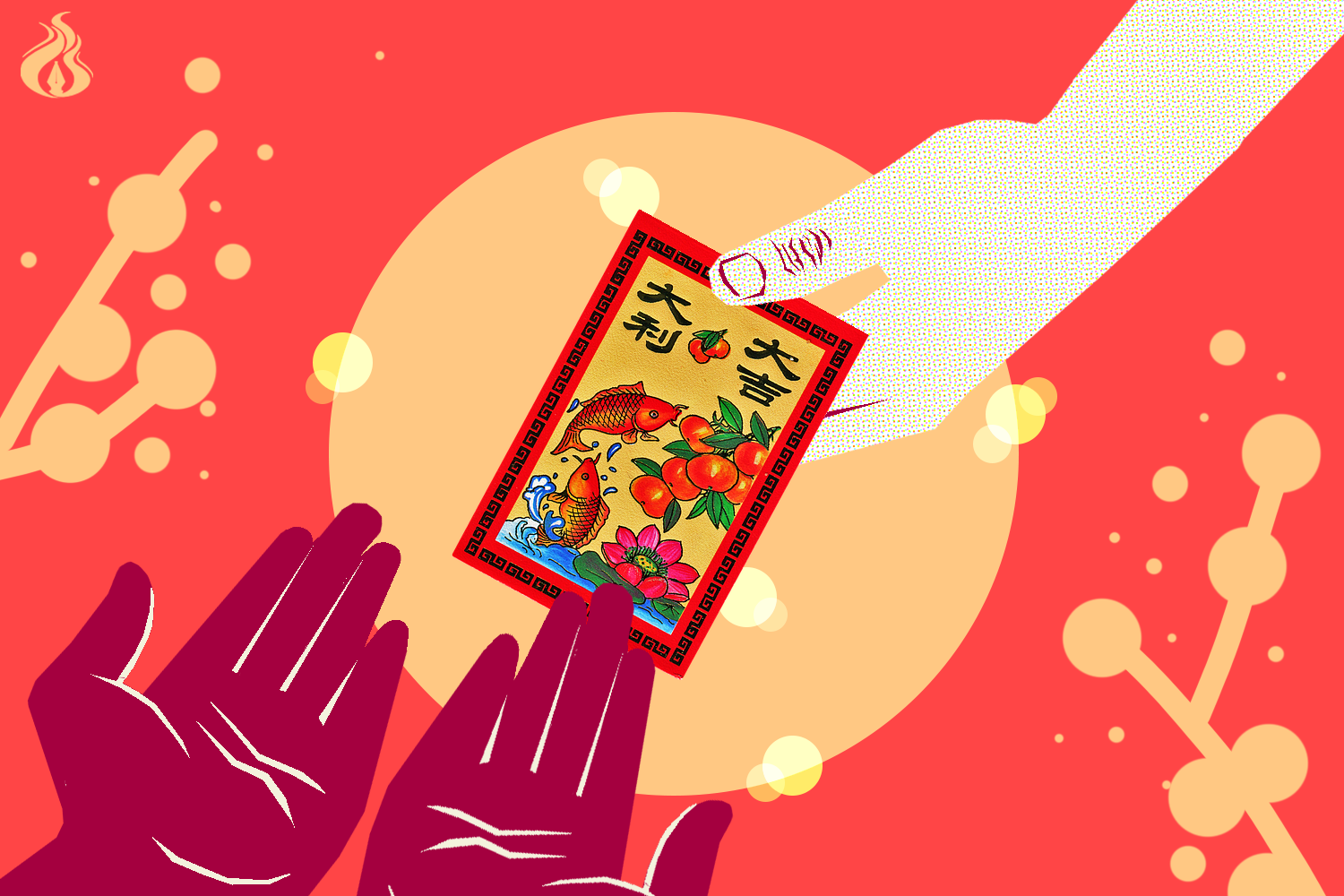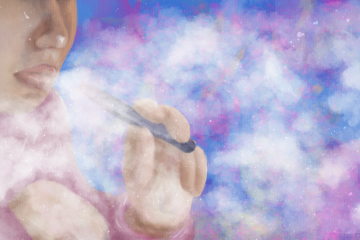
ONE WILL know that another lunar year has come when streets are filled with sights of red colors, sounds of familial joy, and the scent of various Chinese traditional foods.
To members of the Chinoy Thomasian community, the celebration of the lunar year also means a sacred family reunion—paying respect to their ancestors and giving of ang pao—a way of welcoming another year of prosperity and breakthrough.
As the tradition comes through the new members, adaptability shines through the younger generations’ choices in how they practice their traditions, as each generation comes with choices that translate to change.
Festivities
The weeks leading up to the Lunar New Year are exciting for behavioral science sophomore Denise Andrea Sia.
As a daughter of two store owners in Quiapo, she fondly noted people greeting each other a happy Lunar New Year, and the appearance of red lanterns on every street corner while vendors sell tikoy.
“For me, [I most enjoy] the tradition of giving, and the positive energy that the festival brings,” Sia said. “Seeing people get so happy when given an ang pao or a box of tikoy just makes my day.”
For third-year behavioral science student Justin Cacey Chua, the festivities of the Lunar New Year bring particular excitement to her community in Binondo, a district in Manila where the oldest Chinatown in the world can be found.
“Before the pandemic, there were dragon dances we watched as a family on our streets. There were also fireworks,” Chua recalled.
Although these festivities bring life to the culture of some artlets, literature junior Christian Tuaña cited the challenges traditions may bring, signaling that even if there is beauty in the old practices, culture has much to gain in changes.
“I enjoy parts of our tradition such as birthday noodles that symbolize long life,” Tuaña said. “But as a person with a disability,, I sometimes go to temples and cannot help but watch performances that are difficult for me to enjoy due to the need to stand up for a long time.”
Traditions Kept and Left Behind
While there are traditions that are still being practiced, some younger Chinoys prefer to leave some behind.
Asian studies junior Lauren Monica Pineda said the tradition of fixed marriages in Filipino-Chinese circles is no longer followed as it used to be before. Nowadays, even if the parents set their children up with someone, it is still up to the involved parties if they want to be in a relationship or not, she added.
“In general, fixed marriages do not happen these days,” Pineda said. “[But], if there are, maybe I just don’t know anyone with fixed marriages as it is really rare to have that traditional mindset of having fixed marriages these days.”
Tuaña echoed Pineda’s observations, noting that he has not seen any cases of fixed marriages yet: “Arranged [marriages] is different from fixed, but I also haven’t heard of arranged marriages being practiced here recently.”
Hannah Hong, a third year asian studies student, equated arranged and fixed marriage as a hindrance to freedom.
“Each and everyone of us must be… allowed to live freely—and this includes marriage. As Thích Nhất Hạnh stated, ‘In true love, you attain freedom,’” Hong said.
While there seems to be a scientific explanation for everything, several Filipino-Chinese still practice traditions related to good luck.
“[My relatives] have a big obsession with avoiding the number four or 13, or them not cleaning the house before the Lunar New Year to not lose their luck,” Sia said.
Chua also chose to ignore some of the superstitions: “Beliefs like bringing death by wearing black don’t make much sense to me.”
Hong agreed with Sia and Chua’s sentiments, saying one’s success is dependent on one’s actions.
“I believe that as long as you are hardworking, respectful and know how to take care of yourself and others, then you’ll be successful. You don’t really have to be anxious with the superstitions, which most elderly people believe in,” she said.
Tuaña, however, still practices some of these beliefs: believing there is more gain when one follows them.
“I’m not really losing anything [by] believing in it,” he said.
Intergenerational Differences
With the diversity of beliefs being kept and left behind, reactions to these choices are expected.
Differences between the younger and older generations —particularly on how traditions are to be kept alive—are evident.
“The [older ones] are very traditional, especially when it comes to Chinese customs, beliefs, practices, and rituals.” AB Scarlet adviser Royce Lim told The Flame.
“The most significant difference between the younger and older generations of Chinoys is the younger generations’ ability to adapt to what is happening in our society, while the older ones are not open to it yet,” he added. F – Lila Victoria Reyes



